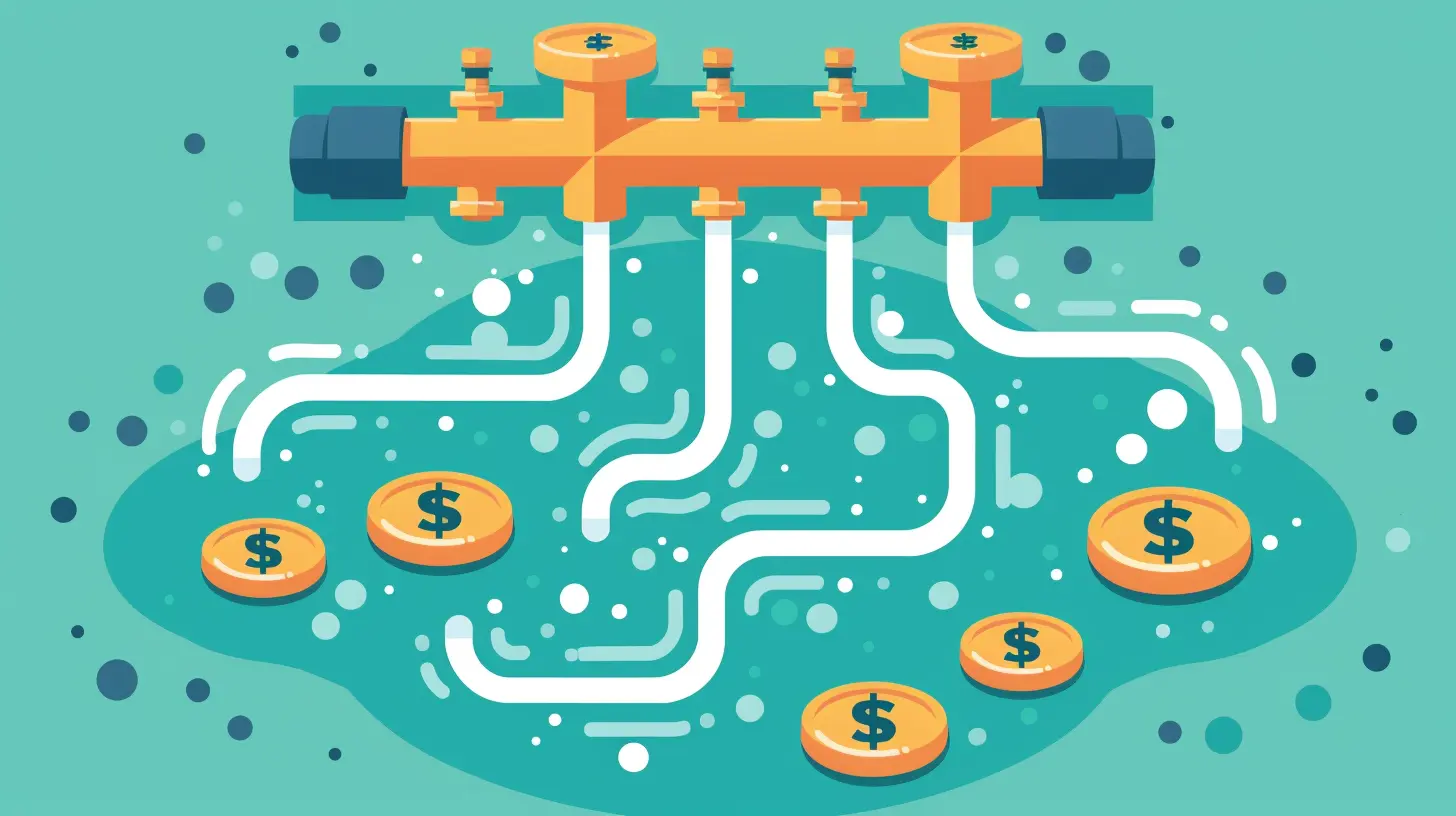The Role of Efficient Billing Systems in Maintaining Healthy Cash Flow
18 August 2025
Let’s face it—running a business is like juggling flaming batons while riding a unicycle. You’ve got products to deliver, customers to satisfy, and a team to manage. Now, throw in the cash flow mix, and you’ve got yourself a high-stakes balancing act.
Cash flow is the lifeblood of your business. No matter how fantastic your product or service is, if the money isn’t flowing in consistently, things can fall apart quickly. And guess what? One of the most underrated but crucial players in this whole equation is your billing system.
In this post, we’re going to talk about how an efficient billing system can help keep your cash flow healthy, steady, and predictable. So grab a coffee, sit back, and let’s unpack this together.
Why Cash Flow is King in Business
Before we dive into billing systems, let’s talk about why cash flow matters so much. Cash flow is simply the movement of money in and out of your business—like a financial bloodstream. It tells you whether you’ve got enough available cash to pay your bills, make payroll, restock inventory, or invest in growth.When your cash flow is healthy, you sleep better at night. But when it’s not? That’s when the stress kicks in. Late payments, delayed projects, and even the threat of bankruptcy can stem from poor cash flow management.
So, how does billing tie into all of this?
Billing and Cash Flow: What’s the Connection?
Think of billing as the engine that fuels your income. If this engine is slow, outdated, or broken, you’ll stall—fast. Efficient billing ensures that:- Invoices go out on time.
- Payments are collected promptly.
- Errors are minimized.
- Clients are less likely to delay payment due to confusion or disputes.
Poor billing, on the other hand, is like a leak in your revenue pipeline. You may not see it right away, but over time, it can bleed your business dry.
Signs Your Billing System is a Cash Flow Killer
So how do you know if your billing system is holding you back? Be on the lookout for these red flags:- You’re still sending out manual invoices.
- There are frequent invoicing errors.
- Customers often complain about billing confusion.
- Payment reminders are sent out inconsistently, if at all.
- It takes weeks (or months!) to collect payments.
Sound familiar? Don’t worry. The good news is, you can turn things around with the right system in place.
What Makes a Billing System “Efficient”?
Let’s get down to brass tacks. An efficient billing system is one that automates, streamlines, and simplifies the entire billing process. Here's what to look for:1. Automation
Time is money, right? Automating your billing process means you’re not spending hours sending invoices, following up with clients, or tracking payments. It also reduces the chance of human error.
Automated systems can:
- Send invoices instantly after a service is rendered.
- Auto-send payment reminders.
- Apply late fees automatically.
2. Integration with Other Tools
Your billing system should play nicely with your accounting software, CRM, and payment gateways. This way, data flows seamlessly between systems, and you keep everything in sync.Think of it like a band—when all the instruments (tools) are in tune and working together, the result is music (a smooth business operation).
3. Customizable Invoicing
Not all clients are the same, and your invoicing shouldn’t be either. An efficient billing system allows you to:- Add your branding and logo.
- Adjust payment terms as needed.
- Provide detailed breakdowns to avoid confusion.
4. Multiple Payment Options
The easier you make it for clients to pay you, the faster you’ll get your money. Offering various options—credit cards, bank transfers, online platforms—can significantly reduce payment delays.5. Real-Time Reporting and Alerts
Wouldn’t it be nice to know who’s paid, who hasn’t, and when your next invoices are due—all in one place? Real-time dashboards give you the visibility needed to make smart financial decisions.How Efficient Billing Supports Healthy Cash Flow
Now that we know what an efficient billing system looks like, let’s tie it back to cash flow. Here’s how the magic happens:1. Faster Payments
When invoices are sent promptly and are easy to understand, clients are more likely to pay quickly. Automation and reminders help reduce “oops, I forgot” delays.2. Fewer Disputes
Detailed, accurate invoices mean fewer client queries and disputes, which often delay payments. Clarity equals quicker cash in your pocket.3. Improved Forecasting
Knowing exactly when and how much you’re getting paid gives you confidence in your cash flow projections. Forecasting helps you budget smarter and avoid financial pitfalls.4. Stronger Client Relationships
Billing mistakes and late reminders can sour your relationship with clients. An efficient, professional billing process builds trust and credibility.5. Reduced Operating Costs
Manual billing eats up time and resources. By switching to an efficient system, you free up your team to focus on more valuable tasks, saving money in the long run.Real-Life Example: Small Business, Big Turnaround
Let’s paint a picture. Imagine you’re running a boutique marketing agency. You’ve got a handful of loyal clients and a small team. You’re good at what you do, but cash flow is always tight.Why? Because you:
- Wait until the end of the month to send out invoices.
- Forget to include key details, so clients ask for corrections.
- Manually follow up on late payments—when you find the time.
Now imagine you switch to a billing system like FreshBooks or QuickBooks. Invoices go out automatically right after a project wraps up. Clients get friendly reminders before the due date. You offer easy online payment options. Suddenly, payments start rolling in faster. You're spending less time chasing money and more time growing your biz.
That’s the power of efficient billing.
Choosing the Right Billing System for Your Business
There’s no one-size-fits-all solution, but here are some questions to help narrow things down:- Do I need recurring billing or one-time invoicing?
- What integrations are important (e.g., accounting, CRM)?
- How tech-savvy is my team?
- What’s my monthly budget?
- Does it support international currencies and taxes if I work globally?
Some popular options include:
- FreshBooks
- QuickBooks
- Zoho Invoice
- Xero
- Wave
Each has its strengths, so test a few and see what fits your workflow best.
Tips to Supercharge Your Billing Process
Want to go the extra mile? Try these tips:- Set clear payment terms upfront. Don’t assume your client knows when payment is due—spell it out clearly.
- Offer early payment incentives. A small discount can encourage quicker payments.
- Charge late fees (nicely). No one likes them, but they work.
- Follow up like clockwork. Be polite but consistent.
- Keep your billing records tidy. Organized invoicing records make tax season way less painful.
What the Future Holds: AI and Smart Billing Systems
As technology evolves, so do billing systems. Artificial intelligence can now:- Predict late payments
- Flag inconsistencies
- Recommend optimal billing times
In short, the future of billing will be even more automated, intelligent, and user-friendly. So if you’re still stuck in the “print, sign, and mail” days—it’s time to upgrade.
Final Thoughts: Don’t Let Billing Be an Afterthought
At the end of the day, billing isn’t just about collecting money—it’s about building a financially sustainable business. An efficient billing system is like a well-oiled machine. When it runs smoothly, everything else in your business flows better too.So if your cash flow could use a little TLC, don’t just cut costs or beg clients to pay faster. Take a hard look at your billing system. Because sometimes, fixing the flow just means fixing the faucet.
all images in this post were generated using AI tools
Category:
Cash FlowAuthor:

Baylor McFarlin
Discussion
rate this article
1 comments
Halle Ward
Embracing efficient billing systems is key to unlocking your business's financial potential. Streamlined processes not only enhance cash flow but also empower you to focus on growth and innovation. Keep pushing forward!
September 2, 2025 at 4:44 AM

Baylor McFarlin
Thank you for your insightful comment! I completely agree that efficient billing systems are crucial for improving cash flow and enabling growth. Let's keep the momentum going!


